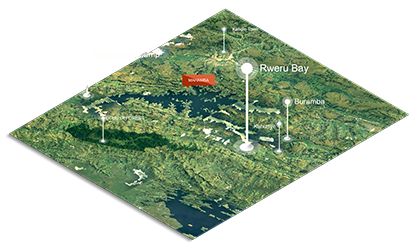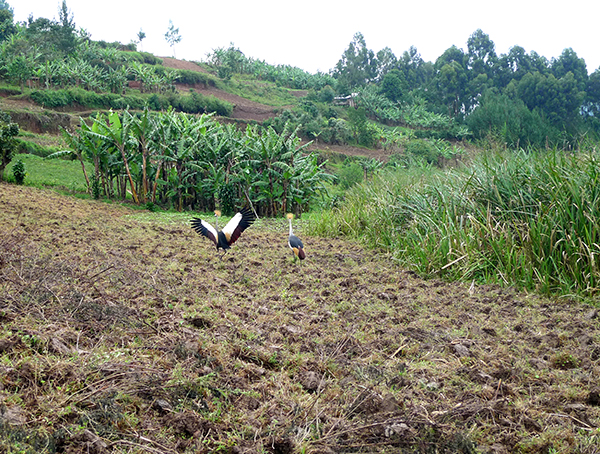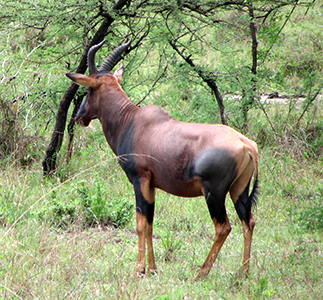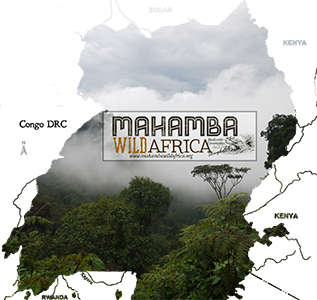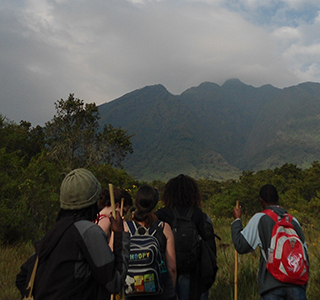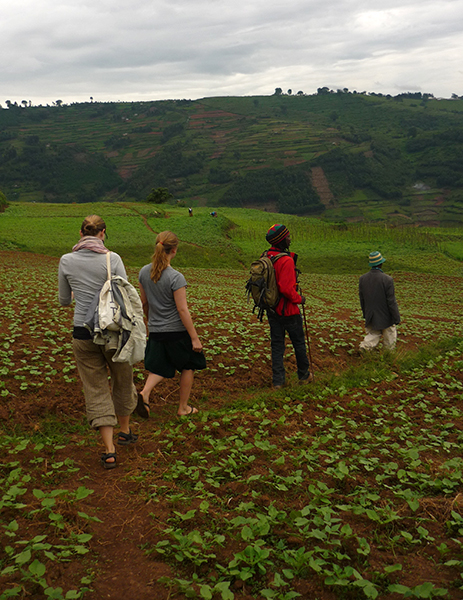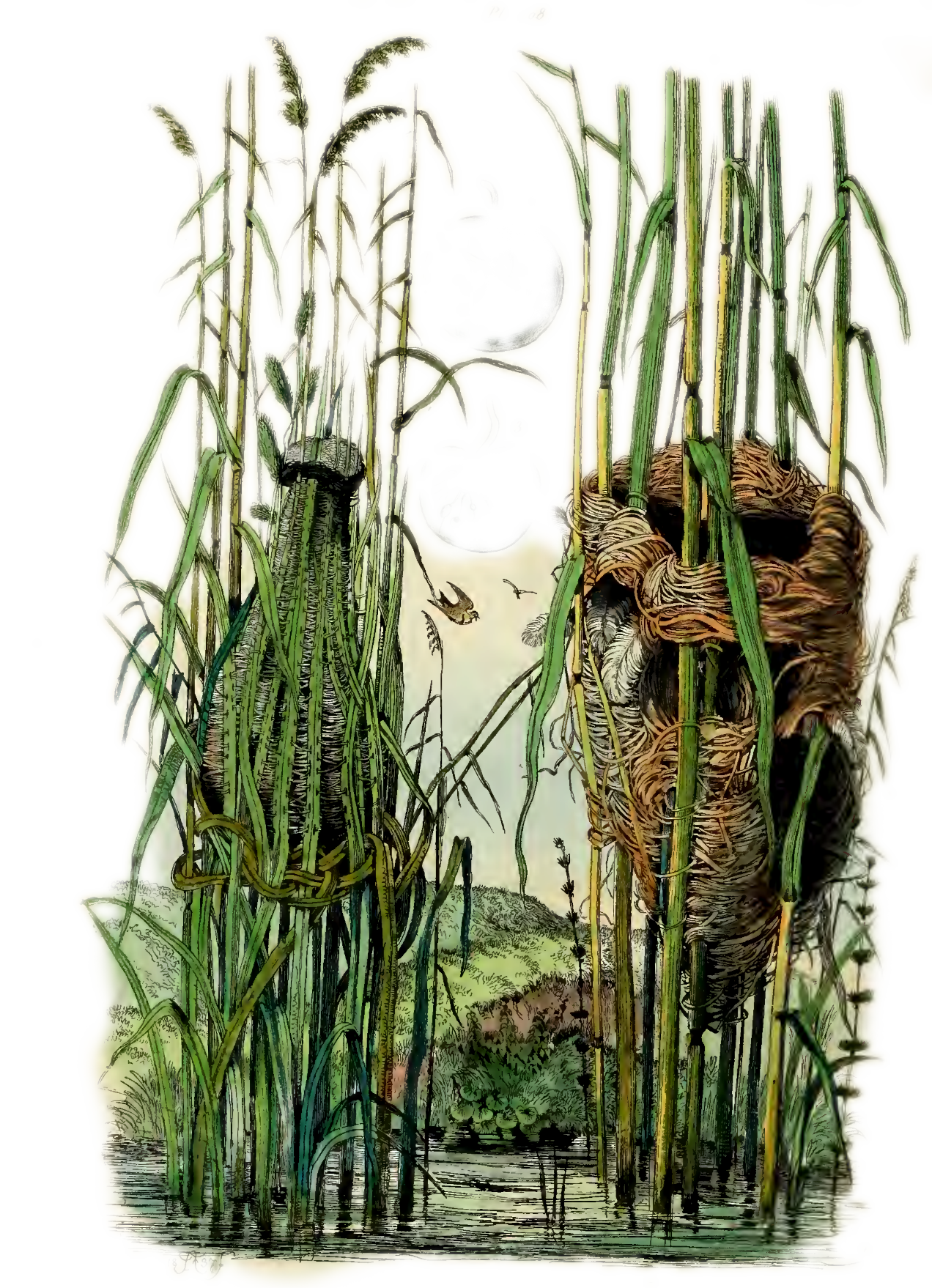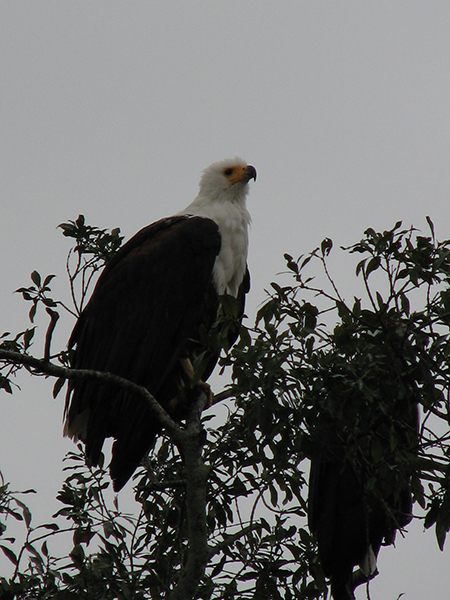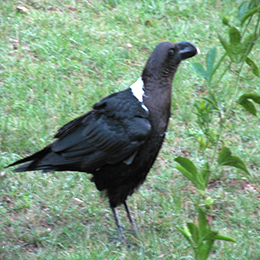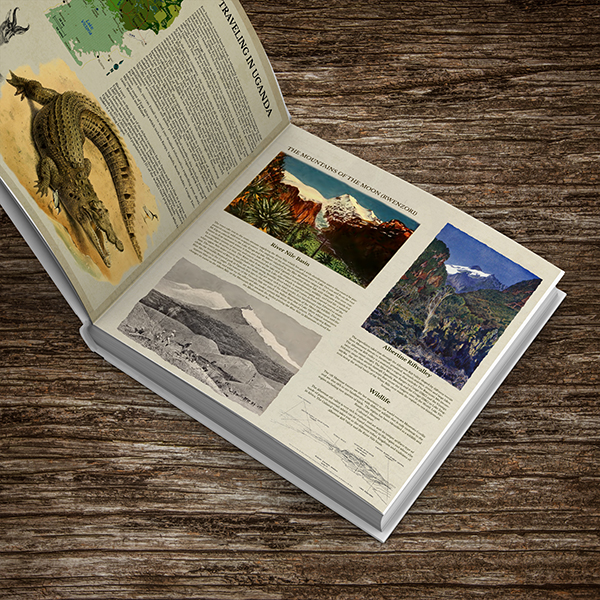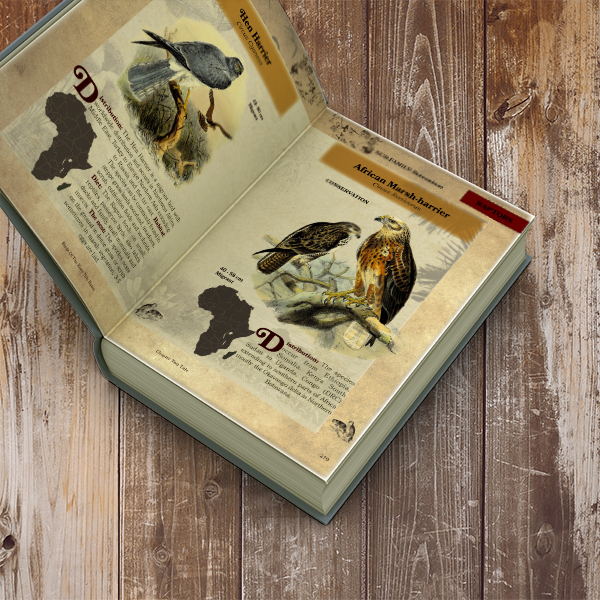Our Conservation Projects
Mahamba Bird Conservation Centre Lake Bunyonyi Uganda
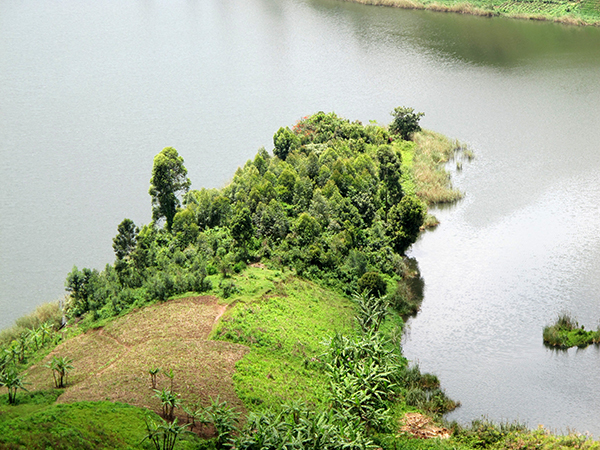
Africa embraces a very wide range of habitats and ecosystems, with varying degrees of species diversity within them. Some ecosystems are impoverished relative to their recent past and the diversity of species is greatly depleted in certain areas. The species diversity aspect can be most easily quantified and is therefore used in the examples which follow. Species diversity within habitats varies greatly and is very much higher in lowland equatorial rain forest than anywhere else. In general, species diversity is well correlated with the annual amount of rainfall, with wetter areas tending to be richer in species. Other factors affecting species diversity include the shape of the landscape (topography), drainage, vegetation, and soil type.
The number of species within any given African country therefore depends partly upon the rainfall received, but also on the degree of topographical and habitat variation within each country. Countries with extensive mountain ranges and those with a wide variety of habitats support many more species than do those that show much less environmental variation. In view of these factors, it is not surprising that Congo (DRC) is probably the richest nation in Africa in terms of species diversity (it includes extensive lowland rain forests, northern and southern savannas, large areas of wetlands and lakes, and mountains), though South Africa has a much richer flora, mainly due to the unique Cape flora. Other countries that exhibit great variation in habitats, and are hence internationally important for biodiversity, are Cameroon, Kenya, Nigeria, South Africa, Tanzania and Uganda. Biologists have attempted to describe the regional variation in habitats and species in a number of ways.
In Africa, traditionally Birds have been overlooked in studies of wildlife conservation, which led to the destruction of their habitations outside protected national parks and wild reserves. Birds are very beneficial to the ecosystems and the biodiversity of Sub-Saharan Africa, which includes wetlands, forests livestock and agriculture. Birds should not just be considered as a tourist attraction, because they play a very useful role in conservation and balancing natural resources in controlling eco pests. The economic value of birds to agriculture has long been recognized in other countries worldwide, including the United States of America which is one of the most successful agricultural countries in the world. Most countries worldwide have introduced elaborate laws protecting birds of economic value to agriculture. Similar regulations are necessary for Sub-Saharan Africa.
Uganda is on the top list of the richest countries for its fauna and flora that is a home to 1,007 species of birds and their subspecies. The terrain of Uganda is a mixture of Mountain forests, Savannah grasslands & forests, lowland forest, rain forests, riverine, marshes and extensive wet lands which makes a suitable choice for species especially birds. Uganda has 67% of African bird population and 11% of the world’s bird population which makes it a very Important bird area.
Mahamba Wild Africa Tropical Seed Bank
The Acacia tree is one of the oldest trees in the African landscape. It is a very good sustainable resource for both, man and the biodiversity as a whole.
There are many different species of the Acacia that grow in different countries, but can be made to adopt to other environments in the region.
According to research, the Acacia tree improves soil fertility and provides a dry season umbrella, for mostly very dry and arid conditions.
Our project has for the last few years researched and sourced seeds for replanting indigenous flora and fauna that have become extinct.
This will assist in the restoration of the original flora and fauna in some areas which will rejuvenate bird life that have been absent due to the destruction of their habitations.
The project is geared to educate communities around the lake area to do the same for the purpose of promoting birding tourism.
Our organization is seeking partner organizations and volunteers to create a broader outreach.
See the list of seeds available in our collection down below.
Our list is still being updated, as we expand our collection. Interested groups can email us to send them our seed collection catalogue.
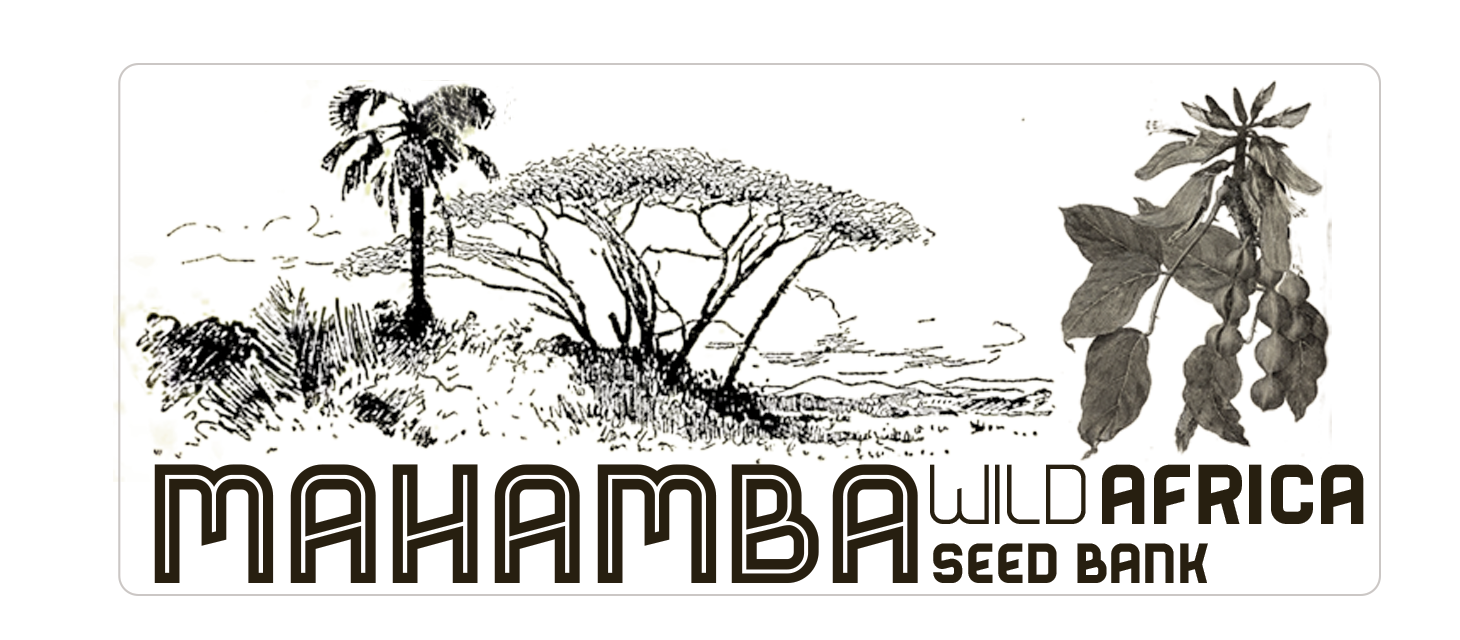

Bird Atlas Of Lake Bunyonyi
coming out soon
Mahamba Wild Africa will be publishing the Atlas of Birds of Lake Bunyonyi with over 200 illustrations and information on breeding, migration and habitat. This to assist in our conservation process, species record and occurrence account. The main goal is to create awareness of the species to the communities in the region to help create a income generating projects through tourism. The publication is mainly for creating local guides and will act as a tourist guide book.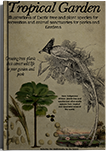
Publications
The Atlas together with the tropical garden book provides information and work plans on how to create bird sanctuaries and biodiversity sanctuaries of indigenous plants, including tree species, water plant species and medicinal herbs. It also includes creating small lakes to ponds that are self-sustaining with water refining plants and solar powered eco-friendly water pumps, to keep the water fresh all year round.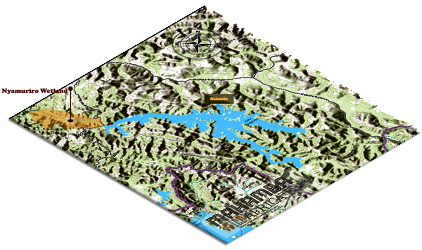
Nyamuriro Swamp The bird species that are criticaly threatened in the wetland include Papyrus yellow warbler, Great swamp warbler, Carrutheri’s Cisticola, White-winged swamp warbler, Papyrus Canary and the Crested Crane
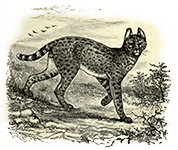
Near extinct Species around the highlands
Serval Cat Leptailurus serval
The Serval cat, known as a "mondo" in Rukiga, used to be abundant in the Kigezi main ridges of the Albertine rift valley and is also considered sacred by the local tribe of the Bakiga. The species are near extinction in the mountainous region of the Albertine as most of its habitation has been destroyed of hunted down as a common pest. The last remaining species of the serval cat which are about a dozen in the lake area, are in Kachwekano research forest and farm overlooking Lake Bunyonyi.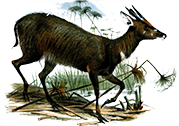
Marshbuck sitatunga Tragelaphus spekii
The Sitatunga, known as the "Anjobe" in the local Rukiga language, was once abundant in the marshes and swamps around the lake. Due to lack of habitation and destruction of swamps around the lake, the species face a near extinction threat and are only remaining in handfuls of about 12 families around the swamps of Murandi.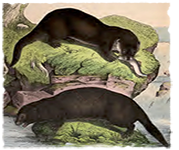
Otter Lutrinae
There are 13 species of otter worldwide and 3 of those occur in Lake Bunyonyi. The cape clawless otter and the DRC clawless otter are the largest African otters and are associated with most wetlands habitats. They are most active between dusk and dawn and are hence less likely to be observed than the smaller darker spotted necked otter, a diurnal species that is unusually common and visible on Lake., but there have been few sightings for the last few years.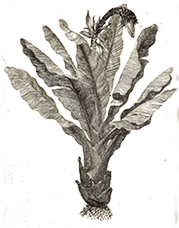
Wild Banana Musa
The Wild Banana is the biggest wild herb in the world and Uganda has the most species in Africa. These giant herbs are very useful in day-to-day use in African communities. It is most commonly used as food, construction material, ropes, the list, etc. The species, that need the most protection, are the "Musa acuminate" or the "Mutembe "in the local Rukiga language. Once the species was very abundant, but is fast dying out, as the communities have lost the tradition of planting these herbs. The species can be commonly seen around old traditional homesteads, as they are considered scared.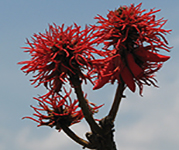
Erythrina Erythrina abyssinica
Erythrina abyssinica is a tree species of the genus Erythrina, belonging to the plant family of the Fabaceae (or Leguminosae). This leguminous tree species is native to East Africa, Eastern DRC and southern Africa.. The species are becoming quite rare to see in recent times.jpg)
Montana Papaya Vasconcellea pubescens
The mountain papaya is a rare species of the papaya family and commonly grows between 15,00-3000 metres above sea level. This species used to be abundant in the Kigezi highlands and also occurs in few places around the world, especially in South America: from Colombia to Chile. This exotic fruit tree is now threatened to become extinct in the Kigezi highlands
Wetlands Vasconcellea pubescens
The drainage of wetlands for farming is threatening the species that depend on them to extinction due to habitat loss.
Pennant-Winged Nightjar Caprimulgus vexillarius
There are a number of threatened bird species around the lake area and the crested or crowned crane is among these species. More detailed information is provided in the bird atlas of Lake Bunyonyi.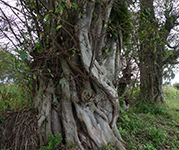
Strangler ficus Ficus altissima
Eco Tourism The ficus share a common "strangling" growth habit that is found in many tropical forest species, particularly of the genus Ficus. This growth habit is an adaptation for growing in dark forests where the competition for light is intense. These plants begin life as hemiepiphytes, when their seeds, often bird-dispersed, germinate in crevices atop other trees. These seedlings grow their roots downward and envelop the host tree while also growing upward to reach into the sunlight zone above the canopy. An original support tree can sometimes die, so that the strangler fig becomes a "columnar tree" with a hollow central core. It is also believed that the strangler fig can help the support tree survive storms.Saving the Raptors of Lake Bunyonyi!
The Value of Raptors in the Balance of the Biodiversity
The are 16 species of Raptors that occur around the hilly shores of Lake Bunyonyi in the main ridges of the Albertine rift valley in Uganda.
The Raptors are facing an uncertain future due to habitat loss.
The presence of birds of prey indicates that the environment is healthy, with a wide and balanced diversity of animal and plant species, adequate ground cover and no poisons. Likewise, a resident pair of Fish Eagles demonstrates the health of a river or wetland. Large birds of prey are especially vulnerable to environmental influences, and changes in their population size can give us early warning regarding the health of the environment.
We need Raptors to maintain a healthy environment, and their disappearance from an area could ultimately contribute to serious environmental problems.
Responsible, sustainable bird-based tourism provides much needed income to people, especially in rural areas, and in turn helps provide incentives for the conservation of Raptors and the environment as a whole.
The List of threatened bird species around Lake Bunyonyi is wide. More information can be found in our Bird Atlas of lake Bunyonyi, which is coming out soon.
Support our projects
Mahamba Wild Africa Conservation Publications
Contact us for more information on our publications: info@mahambawildafrica.org
The Value of Raptors in the Balance of the Biodiversity
The presence of birds of prey indicates that the environment is healthy, with a wide and balanced diversity of animal and plant species, adequate ground cover and no poisons. Likewise, a resident pair of Fish Eagles demonstrates the health of a river or wetland. Large birds of prey are especially vulnerable to environmental influences, and changes in their population size can give us early warning regarding the health of the environment.
